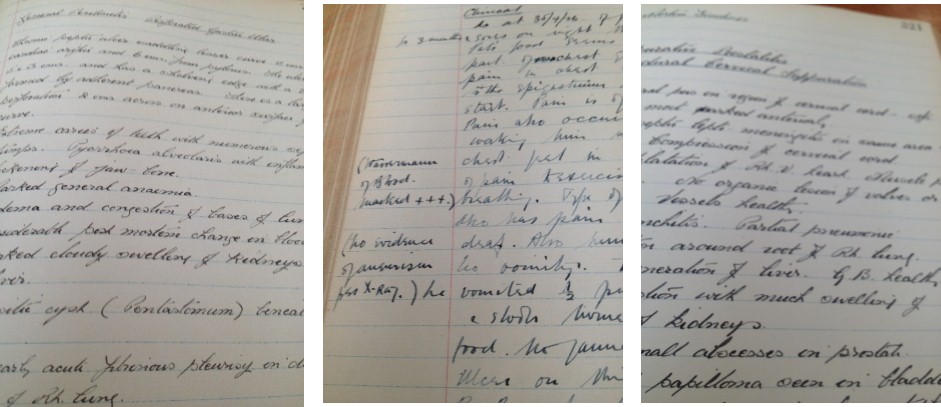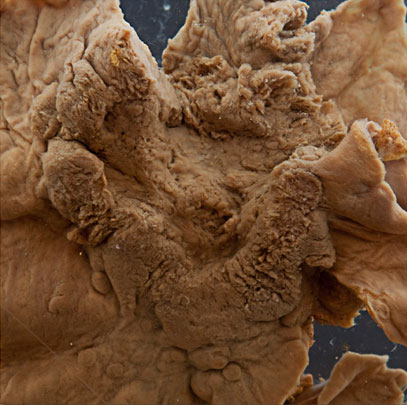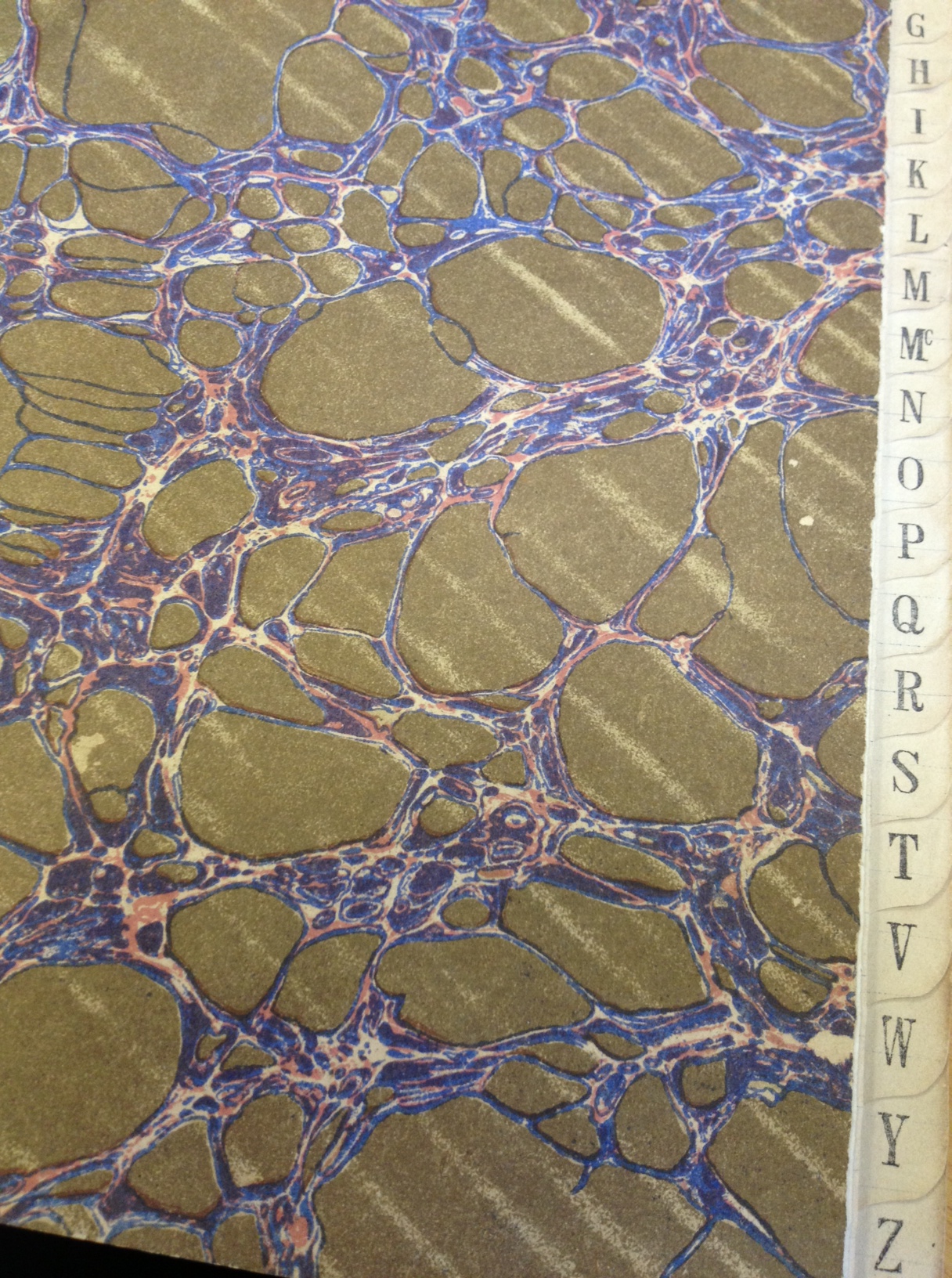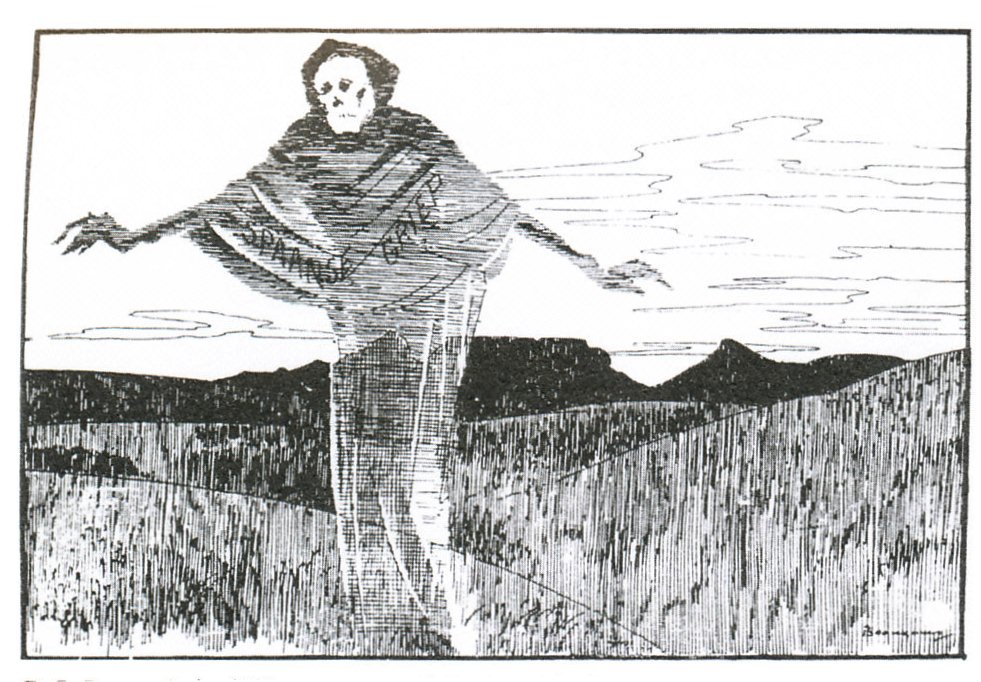In December 1920 there is a confident new handwriting in the PM book, and the cases are initialled GBB. George Bertram Bartlett was the second appointed professor of pathology at the University of Cape Town, the first to actually take up the job. It appears he hit the ground running, performing 7 autopsies before the year was out.
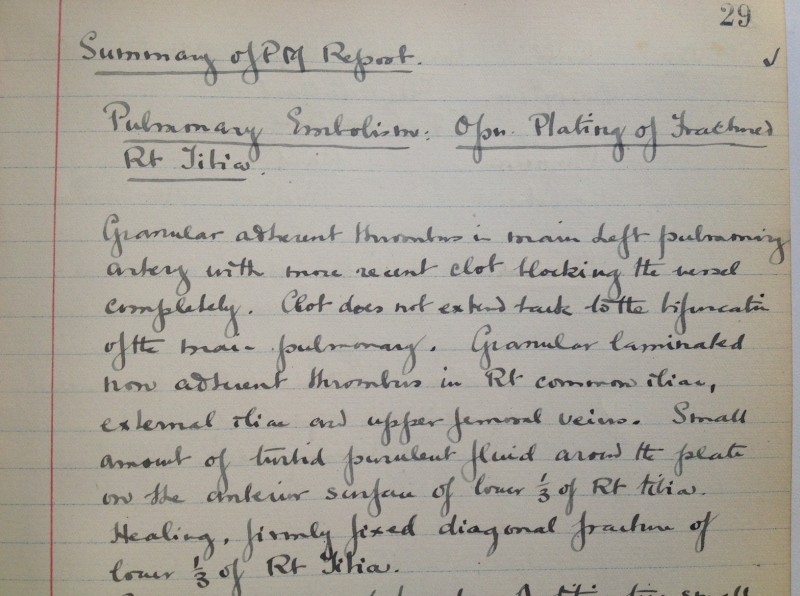
A summary of the primary findings for the 12 medical autopsies of 1920:
Infections: Disseminated tuberculosis (two cases), bacterial endocarditis, septicaemia with multiple lung abscesses, dysentery, bacterial meningitis (secondary to an ear infection?).
Neoplasms: A kidney tumour, a pancreatic tumour, carcinoma of stomach (a gastrostomy had been performed by Professor Saint, first professor of surgery at UCT).
Other: Nephritis with pulmonary oedema, perforated gastric ulcer, pulmonary embolus (following a fractured tibia and fibula, which was plated – see original notes above).
It is not a profound observation, but just sad to think that deaths could have been avoided had there been effective antibiotics available.
Today, we still hold two preserved specimens from these twelve cases, the earliest specimens in our pathology teaching collection – a Hydrocoele of the tunica vaginalis (an incidental finding) and a Carcinoma of the stomach .
The following year (1921) autopsies rose to 58, from which 13 specimens are preserved. During the 1930s autopsy numbers ramped up to around 250 per year, remained at this level through the war years, but by 1950 exceeded 500 annually.
